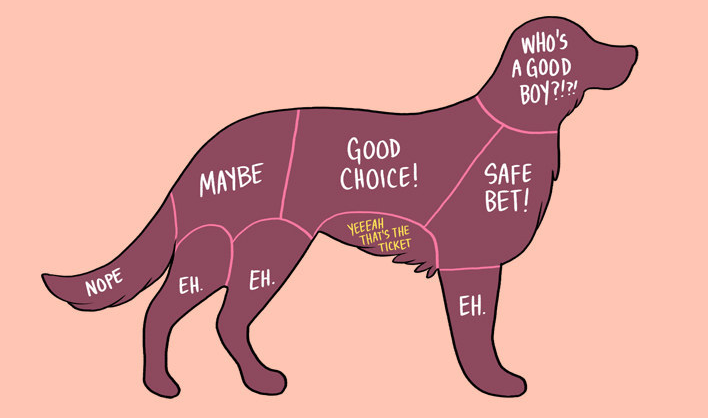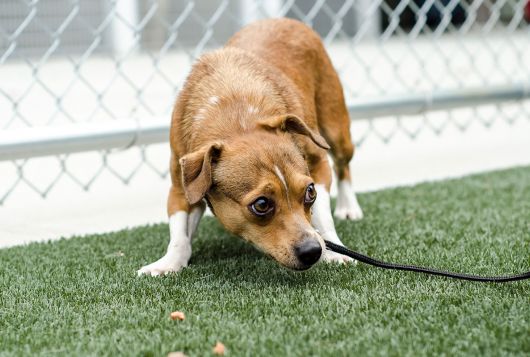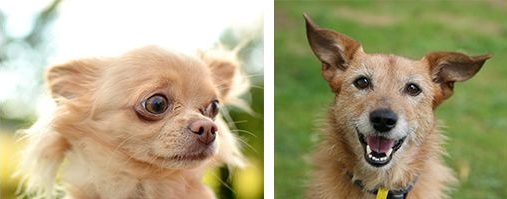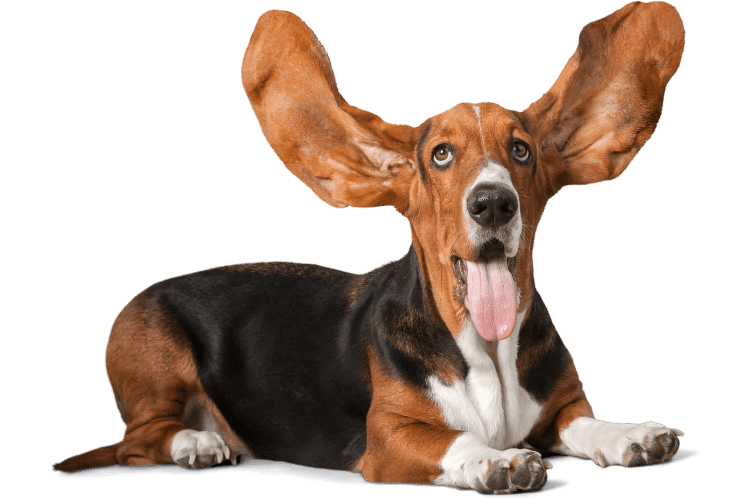
You may be thinking to yourself, “What kind of dog doesn’t like being petted?” However, the truth is, not all dogs want to be rubbed or petted. While some dog owners may already know whether their dog enjoys being petted, others may be in the process of figuring out their dog’s preferences. Regardless, all dog owners should pay attention to a dog’s body language.
Picking up on a dog’s body language will not only help you react appropriately to an uncomfortable or nervous dog, but it will also help you determine what your dog likes and dislikes.
While dogs can’t use words to talk to us, they can communicate with us using physical signals. Dogs use a variety of cues to let us know how they are feeling and what they are thinking. By paying attention to these signs, you may be able to determine a dog’s intent and emotional state.
Dogs have a variety of ways to signify what they are feeling. However, some of these signals are more noticeable than others. In order to read the signs, you need to know where to look. Dogs will use their eyes, mouth, ears, tail, hair and posture to convey their emotional state.
Not only are eyes the windows to the soul, but they can tell you how a dog is feeling as well. When it comes to the eyes, you should pay attention to the sclera, or white of the eye. If a dog is feeling tense, you will typically see a lot of white.

If a dog is relaxed, its mouth will be too. A dog that is nervous or frightened may pull its lip back at the corners or wrinkle the top of its muzzle to expose its teeth. In addition to this physical sign, the dog may use a verbal sign and growl.

According to the ASPCA, “When a dog is relaxed, his ears may be slightly back or out to the sides. As a dog becomes more aroused, the ears will move forward, pointing toward a subject of interest. When their ears are most forward their foreheads often wrinkle”. It should be noted that this will be easier to detect depending on the dog’s ear type.

In order to read a dog’s tail, you should pay attention to the base and the tail movement. If a dog tucks its tail between its legs, he or she is feeling fearful. A relaxed dog will wag its tail loosely in a neutral position.
The biggest indicator of an upset or agitated dog is raised hackles. Raised hackles occur when the hair on a dog’s back stands up. If this happens when you are trying to pet your dog, you should stop and try to redirect his or her attention to something else.
Is your dog stiff or relaxed? Is your dog moving away from you or leaning into you? Paying attention to your dog’s positioning will tell you whether they are uncomfortable or at ease.
While context is always important to understand a dog’s body language, there are some common signs to look out for. These include:
♥ Nudging his or head into your lap or hand
♥ Leaning into you
♥ Pawing at your hand in order to get you to pet them more
♥ Relaxed posture
Just as a dog will show you that they enjoy being petted, dogs will show you that they don’t like being petted as well. If this is the case, you should look for the following signs:
♦ Moving or leaning away from you
♦ Ducking his or her head away from your hand
♦ Tail tucking and tense
♦ Drawn back lips
♦ Growling
♦ Snapping
♦ Trying to bite
If you have a dog that doesn’t like being petted, it is important to not force petting upon your dog. Instead, you should find other ways to enjoy each other’s company such as going for walks, playing, or just sitting near one another without physical contact. Furthermore, sometimes it’s not the actual act of petting, but the type of petting a dog doesn’t like. In other words, a dog may find one form of petting preferable to another form.
Consider head petting. Often, owners resort to petting their dog on the head to reward them for a job well-done. However, often owners do not realize that in some cases, the dog perceives the pat on the head as something aversive, versus something rewarding. If your dog doesn’t like being pet on the head, try petting him or her somewhere else, such as on the side of the neck or chest. Instead of making contact first, you should always let your dog make the first move. To pet your dog the right way, allow him to initiate contact. Avoid reaching over or across your dog to pet him, and don’t hug or otherwise constrain him.
Having a dog that doesn’t enjoy being petted may not be what you envisioned when you decided to adopt a puppy or adult dog. However, with a little patience and the right dog training resources, your dog may learn to love getting petted. By paying attention to your dog’s reaction to petting, and picking up on any behavioural cues, you can enrich the bond you have with him or her.
Share this post with your friends and family

Join our email list to stay up-to-date about the latest products and offers, plus get
10% OFF
your first purchase.
By submitting, you agree to receive marketing emails for information on news, promotions, and offers from WildWash. For more details see our Terms & Conditions and Privacy Policy. You can unsubscribe at anytime.
